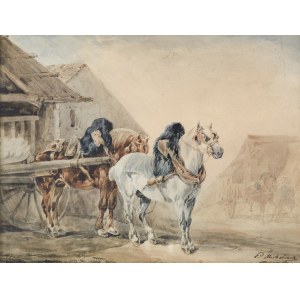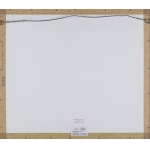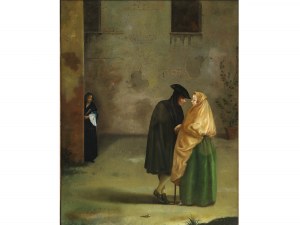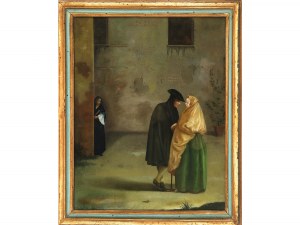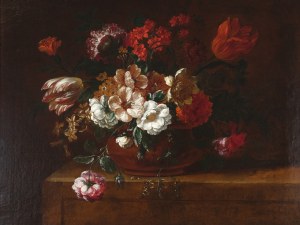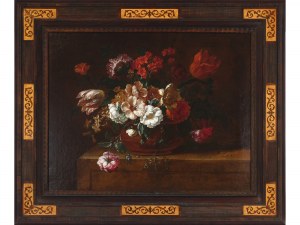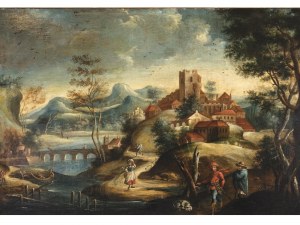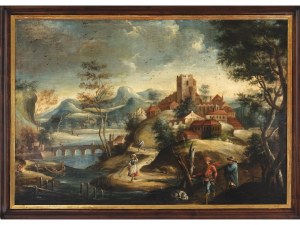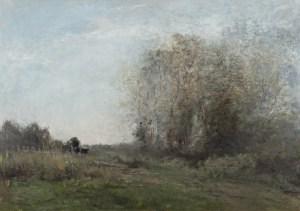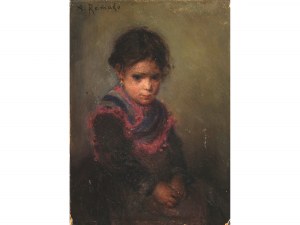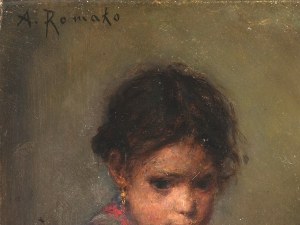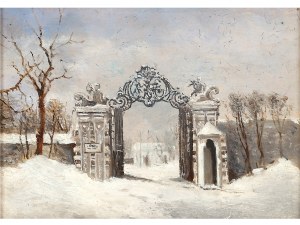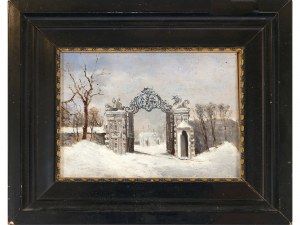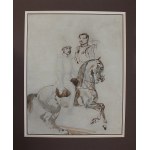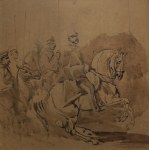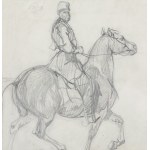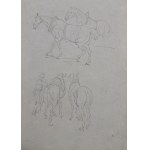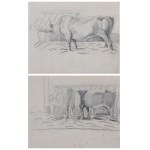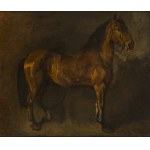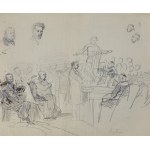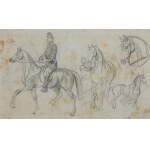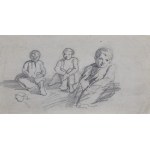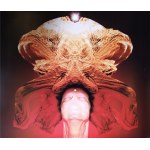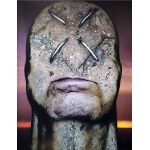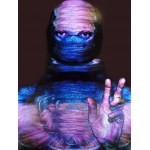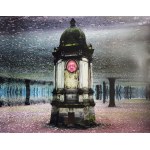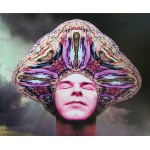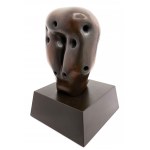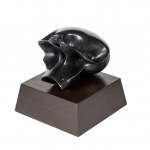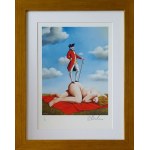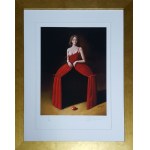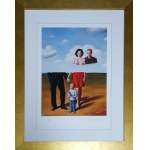23,2 x 30,2cm - watercolor, paper signed p.d.: P. Michalowski
After the defeat of the November Uprising, the artist left for Paris, where he stayed from 1832 to 1835. This is the period when the presented watercolor was created. This is indicated by both the style of the work and the simplified signature.
It was not until he became acquainted with the art of French Romanticism at the time - with the works of Géricault and Delacroix - that the impulse to act, which until then had been stifled by his numerous responsibilities, was given. Michalowski began his studies in the atelier of Charlet (a friend of Géricault), which offered much creative freedom. He could therefore develop his undoubted talent without restraint.
Michalowski became a master of watercolor, an artist who operated with water colors with true virtuosity. His works were very popular at the time, and according to contemporary testimonies, all of Paris flies after his horses: artists, amateurs, experts, non-experts, all want to have the horses of "Micalouski," as they call him. In a word, he is an extraordinary man: he has a herd in his head and more because he sells his horses for the weight of gold, which he would not do with live horses (C. Michalowska, Piotr Michalowski. Outline of life, artistic profession, activity in public life, Cracow 1911, p. 60).
The most accurate characterization of Michałowski's work was provided by his daughter Celina, who wrote, among other things: The backgrounds of his paintings and watercolors are full of freshness, you can feel the air, light and life in them [...] His way of painting horses is completely proper to him. In watercolor, one bold brushstroke is enough for perfect rendering of the neck and the binding, downward flowing details of the musculature, and the anatomical composition and its animation do not suffer from this, but rather gain extraordinary strength. [...] The incredible accuracy of his eye and the boldness of his hand in grasping the truth in lines, movement and expression were not acquired through work; no skill, no long-term study can give them to this degree - he had them from the beginning of his profession as a painter - it was his intuition from an inner spark, which, with great originality, imprints the mark of genius on his works. Small or great, finished or unfinished, it doesn't matter - genius has made its mark here - and this gives the smallest sketch a price that sometimes great canvases finished by painters do not have (C. Michalowska, op. cit., p. 66).
At the time, many watercolors were purchased for England and America, about those that remained in France, it was written that the people who owned them would not get rid of them at any price. The artist reported about his success to his father at the time: Showing my works to several amateurs, artists caused, an unexpected result: I already found in Paris many demands for my drawings, and not wanting to palace myself from the necessary sketches, I had to refuse many. All the artists I know say that I will soon reach great popularity. [...] One only has to thank the Lord God for this unexpected and auspicious result and use the opened field with perseverance (J.K. Ostrowski, Piotr Michałowski, Warsaw 1985, p. 136).
The Paris watercolors - according to the words of the artist's monographer, Jan K. Ostrowski - are united by a well-thought-out, albeit free composition, strict adaptation of the scale of the figures to the shape and size of the card, the delicacy of the color patch, achieved with light, short brushstrokes, and finally the careful, not to say meticulous, execution of details. The color scheme is vivid and bright, using clear blues and browns, supplemented at times by patches of reds and yellows. The scenes are placed in a realistic, but usually sketchily treated, space, with the white of the paper breaking through the soft tone of the background. All the watercolors bear carefully calligraphed signatures, invariably in the P. Michalowski version, which spared the foreign viewer the difficulties arising from the peculiarities of Polish orthography (J.K. Ostrowski, op. cit., p. 55).
Thus, beyond any doubt, the presented Percherons were created during the artist's first stay in Paris and are an excellent example of Piotr Michalowski's virtuosity and mastery.
Piotr Michałowski (Krakow 1800 - Krzysztoforzyce / Krzyżtoporzyce 1855) was the most outstanding painter of the era of Polish Romanticism, and his work is a phenomenon on a European scale. Versatilely talented, he studied natural sciences, law, history and languages at Jagiellonian University and Göttingen between 1815 and 1821. At the same time, from childhood he studied drawing in the Cracow studios of M. Stachowicz, J. Brodowski and F. Lampi. He worked in the administration of the Kingdom of Poland as head of the steel mills and mining counselor. During the November Uprising he managed the production of arms and ammunition at the Bialogon steelworks. From 1832 to 1835 he stayed in Paris and studied in the studio of Nicolas Toussaint Charlet. He was an excellent painter of horses, and his paintings and watercolors gained admiration and great success, so that "all of Paris flew after his horses." Upon his return to the country, he stayed mainly at his estates - Krzyżtoporzyce and Bolestraszyce, taking care of their administration. He traveled extensively in Europe, going to London, Vienna, Carlsbad, Belgium, Holland and several more times to France. In 1848-53 he served as Chairman of the Administrative Council of the City of Cracow. He painted dynamic battle compositions from the Napoleonic wars, equestrian portraits of commanders and hetmans, portraits of family and friends, and portraits of peasants. His oil paintings and watercolors, combining expressive power with sensitivity to nature, are characterized by bold drawing, synthetic form, values of color, freedom of painting technique and the romantic fervor of a Polish patriot.
Recently viewed
Please log in to see lots list
Favourites
Please log in to see lots list



